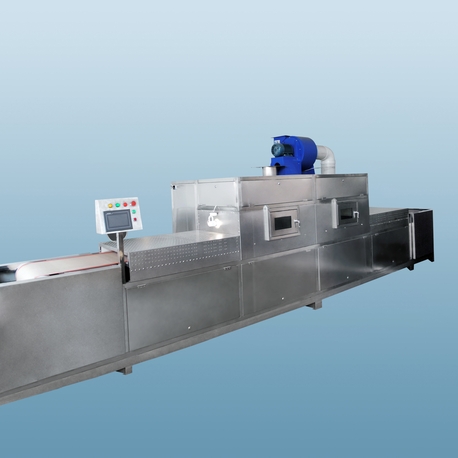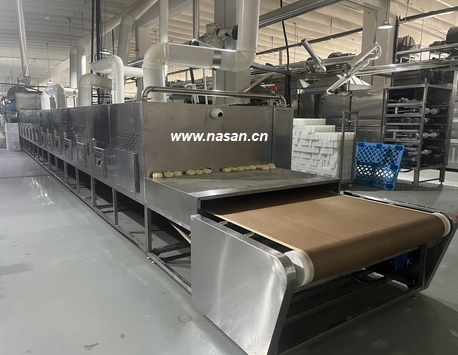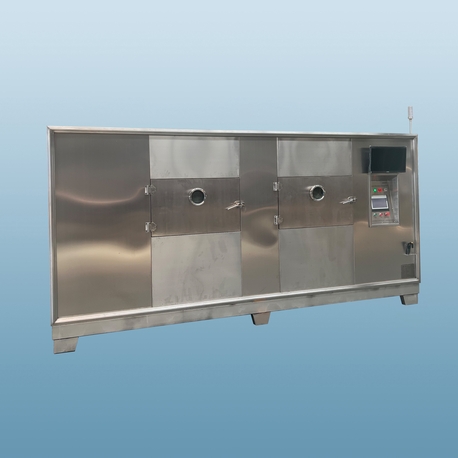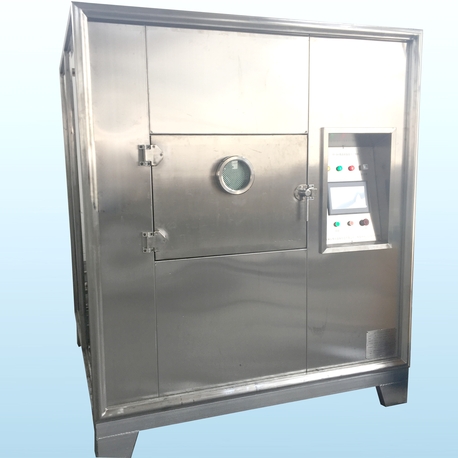In today's food processing industry, preserving meat efficiently and safely is a top priority for businesses aiming to meet consumer demand for high-quality, shelf-stable products. A meat dehydrator plays a pivotal role in this process, offering a reliable method to remove moisture from meat while retaining nutritional value and flavor. This article delves into the essentials of industrial meat dehydrators, covering their technology, practical applications, selection criteria, and cost considerations. Whether you're a facility manager, a food producer, or someone exploring commercial dehydration, understanding these aspects can help optimize your operations and investment.

What is a Meat Dehydrator?
A meat dehydrator is a specialized device designed to eliminate moisture from meat through controlled heating and airflow, thereby preventing spoilage and extending shelf life. In industrial contexts, these machines are built to handle large volumes, ensuring consistent results across batches. The basic principle involves circulating warm, dry air around the meat, which slowly evaporates water content without cooking the product. This process not only preserves the meat but also concentrates its flavors, making it ideal for producing jerky, dried sausages, and other value-added products. Industrial meat dehydrators often incorporate advanced features like programmable settings and humidity control to meet stringent food safety standards.
The technology behind a meat dehydrator has evolved significantly, with modern units offering precision temperature management and energy-efficient operations. Unlike household models, industrial meat dehydrators are engineered for continuous use, featuring robust materials such as stainless steel to withstand harsh environments. By integrating a meat dehydrator into your production line, you can achieve uniform drying, reduce waste, and enhance product quality—key factors in competitive markets.
Types of Industrial Meat Dehydrators
When selecting a meat dehydrator for commercial use, it's essential to understand the different types available. Broadly, industrial meat dehydrators can be categorized based on their drying mechanisms and scale. Common variants include tray dehydrators, cabinet-style units, and conveyor-based systems. Tray dehydrators are versatile, allowing for easy loading and unloading of multiple racks, making them suitable for small to medium-sized operations. Cabinet-style meat dehydrators offer larger capacities and better insulation, ideal for batch processing in facilities with space constraints. For high-volume production, conveyor-based meat dehydrators provide continuous drying, seamlessly integrating into automated lines to maximize throughput.
Another distinction lies in the heat source: electric, gas, or hybrid models. Electric meat dehydrators are popular for their precise control and lower upfront costs, while gas-powered units may offer faster drying times and reduced energy expenses in the long run. Additionally, some meat dehydrators incorporate heat pump technology, which recycles heat to improve efficiency and cut operational costs. Evaluating these options based on your production needs—such as output volume, product variety, and facility infrastructure—can guide you toward the right meat dehydrator investment.
Applications of Meat Dehydrators in the Food Industry
The versatility of a meat dehydrator extends across various segments of the food industry, from meat processing plants to artisanal producers. One primary application is in jerky production, where a meat dehydrator ensures even drying to achieve the desired texture and safety levels. By maintaining low temperatures over extended periods, these machines help develop rich flavors without compromising nutritional integrity. Similarly, meat dehydrators are used for creating dried sausages and cured meats, which require precise humidity control to prevent microbial growth.
Beyond traditional meat products, a meat dehydrator finds use in producing pet treats, where consistency and safety are paramount. In larger facilities, these devices support the manufacture of lightweight, portable meat snacks for outdoor and emergency food supplies. The ability to customize drying cycles allows producers to experiment with different recipes, catering to niche markets like organic or gluten-free offerings. Moreover, a meat dehydrator can be adapted for drying other foods, such as fruits and vegetables, though this article focuses on meat-specific applications. By leveraging a meat dehydrator, businesses can diversify their product lines and tap into growing consumer trends toward healthy, preserved foods.
How to Choose the Right Meat Dehydrator
Selecting an appropriate meat dehydrator involves weighing several factors to ensure it aligns with your operational goals. First, consider capacity: assess your daily production requirements to determine whether a batch-based or continuous meat dehydrator suits your workflow. For instance, a small-scale operation might benefit from a cabinet-style meat dehydrator with multiple trays, while a large plant may need a conveyor system for uninterrupted processing.
Temperature and humidity control are critical features in a meat dehydrator, as they directly impact drying efficiency and food safety. Look for models with digital interfaces that allow precise adjustments, ensuring consistent results across different meat types. Energy efficiency is another key aspect; a meat dehydrator with insulated chambers or heat recovery systems can lower utility bills and reduce environmental impact. Additionally, evaluate the build quality—stainless steel constructions are durable and easy to clean, complying with hygiene standards.
Ease of maintenance and available support services should not be overlooked. A meat dehydrator with accessible components and clear cleaning protocols minimizes downtime and extends equipment life. Finally, compare costs beyond the initial purchase, including installation, energy consumption, and potential upgrades. By conducting a thorough needs assessment, you can invest in a meat dehydrator that delivers long-term value and enhances your production capabilities.

Cost Analysis of Industrial Meat Dehydrators
Understanding the financial implications of acquiring a meat dehydrator is crucial for budgeting and ROI calculations. The initial cost of an industrial meat dehydrator varies widely, ranging from a few thousand dollars for basic models to over $50,000 for high-capacity, automated systems. Factors influencing price include capacity, technology level, and additional features like programmable controls or energy-saving modes. While a higher upfront investment might seem daunting, it often translates to better efficiency and lower operating expenses.
Operational costs for a meat dehydrator encompass electricity or gas consumption, maintenance, and labor. Energy-efficient models, such as those with heat pump technology, can reduce power usage by up to 50%, leading to significant savings over time. Regular maintenance, including filter replacements and component checks, is essential to prevent breakdowns and ensure consistent performance. Labor costs depend on the automation level; a fully automated meat dehydrator may require minimal human intervention, freeing up staff for other tasks.
To justify the investment, calculate the potential ROI by considering increased production output, reduced waste, and higher product quality. For example, a meat dehydrator that speeds up drying times can boost throughput, while precise controls minimize rejected batches. Many businesses find that a well-chosen meat dehydrator pays for itself within a few years through enhanced profitability and market competitiveness. Always request detailed quotes and consider financing options to make the purchase manageable.
Technological Insights into Meat Dehydrator Design
The engineering behind a meat dehydrator has advanced to address industry demands for efficiency and safety. Modern units often feature microprocessor-based controls that monitor temperature, humidity, and airflow in real-time, allowing for adaptive drying cycles. This technology ensures that meat dehydrates uniformly, reducing the risk of under-dried spots that could harbor bacteria. Airflow design is another critical element; many meat dehydrators use horizontal or vertical air circulation systems to distribute heat evenly across all trays.
Heat exchange mechanisms in a meat dehydrator have also improved, with some models employing recirculation systems to reuse warm air, thereby cutting energy consumption. Innovations like infrared drying are emerging, offering faster processing times by directly targeting water molecules in the meat. Additionally, hygiene-focused designs include easy-to-clean surfaces and antimicrobial coatings to meet food safety regulations. As sustainability gains importance, manufacturers are developing meat dehydrators with lower carbon footprints, using recyclable materials and renewable energy compatibility.
These technological strides make today's meat dehydrator a smart investment for forward-thinking businesses. By staying informed about trends such as IoT integration for remote monitoring, you can future-proof your operations and maintain a competitive edge in the food industry.
Frequently Asked Questions (FAQs)
Q1: What is the typical drying time for meat in an industrial meat dehydrator?
A1: The drying time in a meat dehydrator varies based on factors like meat thickness, humidity levels, and temperature settings. Generally, industrial processes can take anywhere from 4 to 12 hours, with thicker cuts requiring longer periods. It's essential to follow food safety guidelines to ensure the meat reaches the appropriate moisture content for preservation.
Q2: How do I maintain and clean a meat dehydrator to ensure longevity?
A2: Regular maintenance of a meat dehydrator involves wiping down surfaces with food-safe disinfectants, cleaning air filters, and inspecting heating elements for debris. Always refer to the manufacturer's instructions for specific protocols. Proper cleaning prevents contamination and extends the machine's lifespan, ensuring consistent performance.
Q3: Can a meat dehydrator be used for other types of food besides meat?
A3: Yes, a meat dehydrator is versatile and can dehydrate fruits, vegetables, and herbs. However, for industrial settings, it's crucial to avoid cross-contamination by thoroughly cleaning the unit between different food types. Some facilities dedicate separate dehydrators for non-meat products to maintain quality and safety standards.
Q4: What safety features should I look for in an industrial meat dehydrator?
A4: Key safety features in a meat dehydrator include overheat protection, automatic shut-off mechanisms, and humidity sensors to prevent microbial growth. Additionally, models with secure locking systems and compliant materials (e.g., FDA-approved stainless steel) help meet industry regulations and protect workers.
Q5: How does the cost of operating a meat dehydrator impact overall production expenses?
A5: Operating costs for a meat dehydrator, such as energy usage and maintenance, can influence production expenses significantly. Energy-efficient models may have higher upfront costs but reduce long-term utility bills. By optimizing drying cycles and performing routine upkeep, businesses can minimize these expenses and improve profitability.
In summary, a meat dehydrator is an indispensable tool in the commercial food sector, offering enhanced preservation, efficiency, and product diversity. By carefully evaluating types, applications, costs, and technologies, you can make an informed decision that aligns with your business objectives. As the industry evolves, investing in a reliable meat dehydrator will continue to be a strategic move for sustainable growth.











